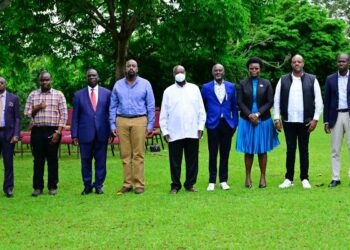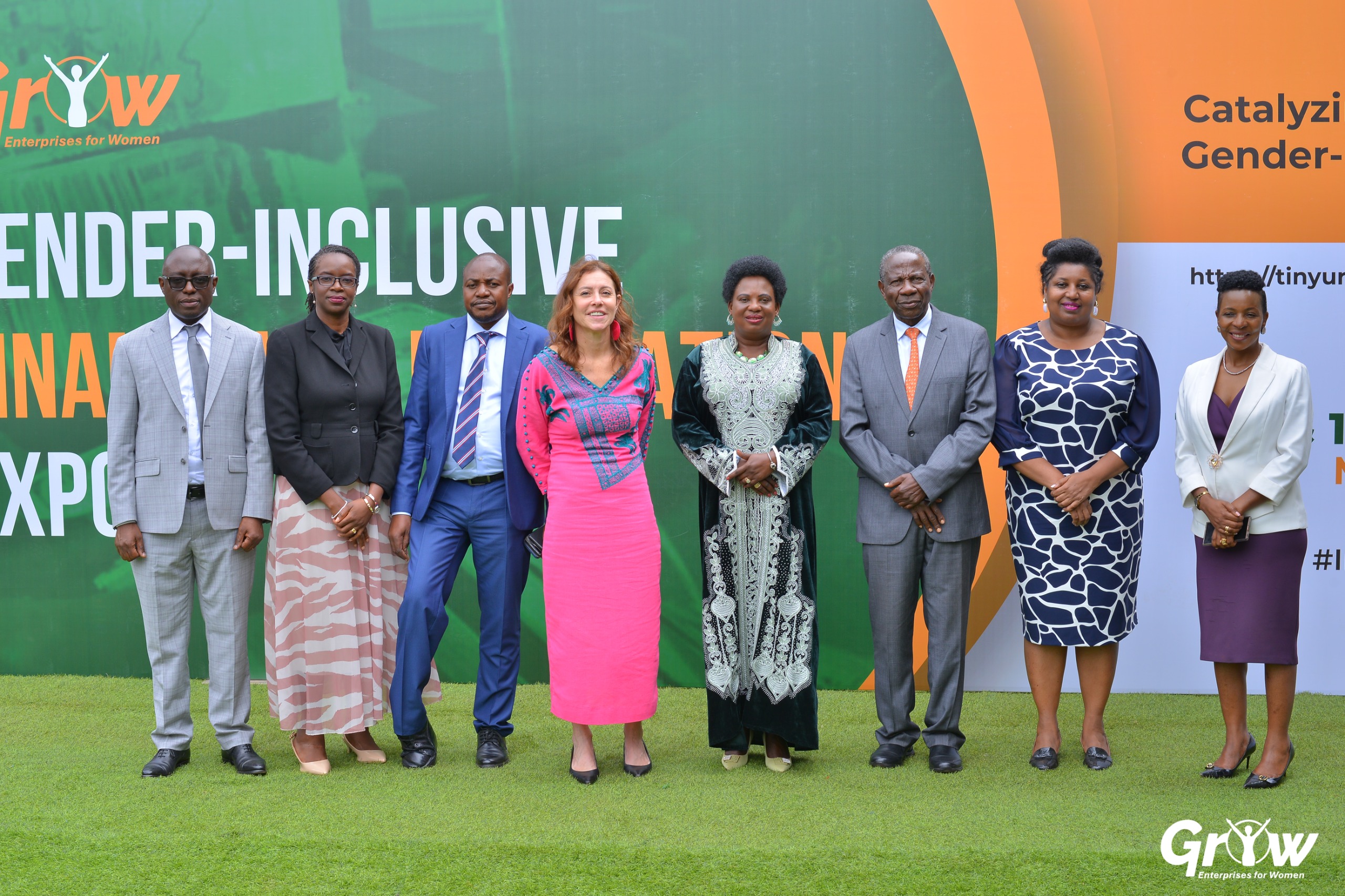Despite continuing economic growth and concerted effort towards socioeconomic transformation, Uganda continues to face persistent challenges to achieve food security. The effectiveness of policy and development strategies to help millions of rural households to achieve food security must be re-conceptualised and hypothesised.
In his address to NRM members of parliament who had flocked to Kyankwazi at the end of May 2023, President Yoweri Museveni noted, “It is the reason; I invite you to Kyankwanzi as soon as you get elected not to carry your constituencies on your shoulders because you cannot manage. Just concentrate on the NRA ideology of supporting sustainable programs which can help to empower everybody. The answer is to engage in production with a calculation. That is; producing both for food and for sale.”
The question therefore will Uganda achieve sustainable food production as well as promote production for the market in the foreseeable future? The short answer is – it depends on who asks, and who hears and answers. I spent six years or so, both at doctorate and post doctorate levels trying to explore answers for this central question, with no conclusive answers, however, I will attempt to address this in two series; a key challenge remains to identify what kinds of interventions can work in which regions and for which households. Silver bullets for agricultural interventions for sub-Sahara African rural households and more particularly Uganda do not exist (Giller 2012). Indeed, policy recommendations or call it blanket policy interventions like PMA, NAADS, EMYOGA, youth livelihoods Operation wealth creation and recently Parish Development Model (PDM)/recommendations are often ineffective, result in low adoption and are largely hijacked by few elites, immensely frustrating the President and millions of rural households.
Instead, the large diversity of households that exists across and within regions require interventions to be context specific (Descheemaeker et al. 2016). Therefore, the diversity of households must be taken into account in assessments of food security and climate change adaptation from local to (sub-)national levels and plausible approaches are needed to guide this.
Many models that are currently used to identify options for agricultural development/stimulation of agricultural production for food security at (sub-)national level are partly top-down approaches, for example they use macro-economic models or large-scale land use models (van Wijk 2014). These models may insufficiently account for the diverse contexts of households risking ineffective interventions. Bottom-up approaches that use micro-level information such as household survey data can account for the local diversity but often only go up to the community or landscape level (Wicher, 2019; van Wijk 2014). They also often do not preserve the variability at the local level in the assessments at broader scales. Since food security and related vulnerability to climate change tend to be locally driven, approaches are needed that can analyse country-wide patterns while preserving information on the local diversity of households.
A critical thread in all of this is how to reconcile the general and the particular. How can food production policies become relevant while negotiating contradictions introduced by the particular i.e., that which is attached to place? New food policy interventions need to seek to contextualize the nation with its inherent social, economic, and political variegatedness and complexity (Engerman and Unger, 2009). These complexities are otherwise often conveniently ignored or avoided as prescriptions for increasing agricultural production are derived from generalized hypotheses which are presumed to have universal applicability. Historical variations and spatial and temporal differences in sociocultural circumstances are dismissed or treated as ‘noise’ to be filtered out to increase the parsimony of development models. The history of presently modern nations is taken as the source of universally useful conceptualizations of development policy.
In the case of Uganda, geo-referenced household survey data that are nationally representative are a promising source of micro-level information for such an approach. In the field of poverty research, such survey datasets have shown to be useful when linked to census data using simple explanatory variables to determine areas or communities with larger prevalence of poverty (Poverty status reports). However, this approach too is limited to the data available in the census dataset, while detailed information on livelihood activities is usually missing. In spite of the potential added value of these approaches, there exists currently no adequate and coherent framework on how such micro-level information could be used for food policy interventions at sub-national and national level while preserving information on the local diversity of households.
Several studies have analysed the relationships between household food security and underlying (household level) drivers: larger cultivated land per capita, better education of the household head, a wider variety of crops, and access to market information are all positively related to food security (Fisher and Lewin 2013; Mango et al. 2014). Yet understanding of what affects household food security among Ugandan food policy prescriptions remain far and in between, and strategies to achieve household food security vary widely across regions and among households.
Wicharn (2019) in her PhD thesis, reports that one challenge lies in the complexity of the food security concept itself, which consists of four pillars: availability, access, utilisation, and stability (FAO 2009). No single indicator can capture all four dimensions of food security. Frelat et al. (2016) developed a simple food availability indicator using information on household on- and off-farm activities of smallholders. This food availability indicator closely correlated to well-established indicators such as the Household Dietary Diversity Score (HDDS) and the Household Food Insecurity Access Scale (HFIAS) (Hammond et al. 2016). Frelat et al. (2016) observed that household food availability improved with increasing dependency on off-farm activities, suggesting diverse strategies among rural households, precisely underscoring a potential for success of Yoweri Museveni’s Ekibaalo framework.
Frelat et al. (2016) analysed cross-sectional household data from more than 13,000 households across 97 locations in 17 countries across sub-Saharan Africa, yet their spatial coverage across the continent in general and Uganda in particular was poor. National food policy makers need disaggregated regional analyses at more local levels, such as the district, county, or sub county to target plausible interventions on food security.
Present top-down approaches of policy interventions ignore local diversity of livelihood strategies and food security. However, context specific studies demonstrate that food security and vulnerability tend to be locally driven with large variability at small scale.
Therefore, to achieve President Yoweri Museveni’s Ekibaalo framework on food security and broaden efforts towards socioeconomic transformation, on top of the strategies already being implemented by various government agencies and development institutions, I do suggest a three-step approach of using micro-level information for multi-level intervention. Firstly, to disentangle livelihood diversity using cross-country household surveys; secondly, to locate important production activities or vulnerable households and suitable adaptation options; thirdly, to use site-specific household surveys to assess which interventions work for which groups of households in the local context (Wicharn, 2019). These suggestions could add to existing approaches by generating spatially explicit and quantitative information on livelihood activities for food availability and on household vulnerability, while accounting for the diversity of households within and across areas – regions, districts, localities et al, eg Kebisoni in Rukungiri and Akadot in Mukongoroshire Kumi; Kidetok in Serere and Kamengo in Mpigi/Butambala; Mutolere in Kisoro and Binyiny in Kween. This will facilitate the exploration and tailoring of food policy intervention options under different future scenarios.
Dr Samuel B. Ariong (PhD) is a recent post doctorate fellow, obtained a PhD in poverty reduction, and is a lecturer in Australia and A Model Farmer in Kidetok, Serere, rural Eastern Uganda.
Do you have a story in your community or an opinion to share with us: Email us at editorial@watchdoguganda.com














